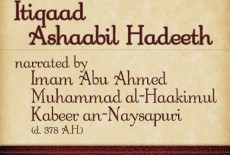صحيح، حسن، ضعيف، مسند، متصل، مرفوع، موقوف، مقطوع، مرسل، منقطع، معضل، مدلَّس، شاذ، منكر، ماله شاهد، زيادة الثقة، الأفراد، المعلَّل، المضطرب، المدْرَج، الموضوع، المقلوب، معرفة من تقبل روايته، معرفة كيفية سماع الحديث وإسماعه، وأنواع التحمل من إجازة وغيرها، معرفة كتابة الحديث وضبطه، كيفية رواية الحديث وشرط أدائه، آداب المحدث، آداب الطالب، معرفة العالي والنازل، المشهور، الغريب، العزيز، غريب الحديث ولغته، المسلسل، ناسخ الحديث ومنسوخه، المصحَّف إسناداً ومتناً، مختلف الحديث، المزيد في الأسانيد، المرسل، معرفة الصحابة، معرفة التابعين، معرفة أكابر الرواة عن الأصاغر، المبج ورواية الأقران، معرفة الإخوة والأخوات، رواية الآباء عن الأبناء، عكسه، من روي عنه اثنان متقدم ومتأخر، من لم يرو عنه إلا واحد، من له أسماء ونعوت متعددة، المفردات من الأسماء، معرفة الأسماء والكنى، من عرف باسمه دون كنيته، معرفة الألقاب، المؤتلف والمختلف، المتفق والمفترق، نوع مركب من اللذين قبله. نوع آخر من ذلك، من نسب إلى غير أبيه، الأنساب التي يختلف ظاهرها وباطنها، معرفة المبهمات، تواريخ الوفيات، معرفة الثقات والضعفاء، من خلط في آخر عمره، الطبقات، معرفة الموالي من العلماء والرواة، معرفة بلدانهم وأوطانهم.
وهذا تنويع الشيخ أبي عمرو وترتيبه رحمه الله، قال: وليس بآخر الممكن في ذلك، فإنه قابل للتنويع إلى ما لا يحصى، إذ لا تنحصر أحوال الرواة وصفاتهم، وأحوال متون الحديث وصفاتها.
” قلت “: وفي هذا كله نظر، بل في بسطه هذه الأنواع إلى هذا العدد نظر. إذ يمكن إدماج بعضها في بعض، وكان أليق مما ذكره.
ثم إنه فرق بين متماثلات منها بعضها عن بعض، وكان اللائق ذكر كل نوع إلى جانب ما يناسبه.
ونحن نرتب ما نذكره على ما هو الأنسب، وربما أدمجنا بعضها في بعض، طلباً للاختصار والمناسبة. وننبه على مناقشات لا بد منها، إن شاء الله تعالى.
1) Authentic
2) Fair
3) Weak
4) Musnad – Supported
5) Muttasil – Uninterrupted
6) Marfoo` – Raised to the prophet
7) Mawqoof – Stops at the companion
8) Maqtoo` – Cut off
9) Mursal – Loose hadeeth
10) Munqati`- Interrupted
11) Mu`dhal – Defective
12) Mudallas – A type where tadlees is committed or misrepresented
13) Shadh – odd
14) Munkar – denied/unfamiliar
15) One that has a corroborator / accordance – i.e shawaahid
16) Ziyadati Thiqah – Additions of reliable transmitters
17) Afrad – Isolated
18) Mu`allal (or Ma`lool) – Defective
19) Mudtarib
20) Mudraj – a type where additions have been inserted in the form of interpretations or
otherwise
21) Mawdoo` – Fabricated
22) Maqloob – Mixed-Up
23) The Know-How of which narration is accepted
24) Awareness of the condition of hearing and transmission of ahadeeth and the types of transmission of the Ijazat and other than that.
25) The knowledge about the books of hadeeth and its Dhabt (i.e precision or memorization)
26) The mode regarding the narration of hadeeth and the conditions of it’s conveyance
27) The Manners of a Muhaddith
28) The Manners of a seeker (student) of Knowledge
29) the knowledge about `Aali and Naazil (types of isnaad)
30) Mashoor (famous)
31) Ghareeb (strange) and `Azeez
32) Ghareeb ul-Hadeeth and the clarification about its wordings (i.e explaining the odd wordings in such ahadeeth)
33) Musalsal – Enchained
34) Naasikh wa Mansookh (Abrogator and Abrogated) hadeeth
35) Musahhaf of the chain and text ( Misreadings in the Isnaad and Texts) [1]
36) Mukhtalif al-Hadeeth – Contradictory Hadeeth
37) Al-Mazeed (Mutassil) fil-Asaneed – Additions to Cohesive Isnaad [2]
38) Mursal al-Khafi (hidden)
39) Knowledge of the sahaaba (their names, and other issues that are crucial to islamic narrations)
40) knowledge of the Taba`een
41) The knowledge about the narration wherein the older one’s have narrated from the younger one’s
42) Al-Mudabaj Riwayat al-Aqran (Symmetrical Transmissions and other instances of contemperories transmission
43) Knowledge about the brothers and sisters (among the scholars and narrators)
45) The Transmission of the father from his son
46) The Transmission of the sons from their fathers
47) He from whom two narrators narrate , one from the earlier time and other from the later
48) He from whom no one narrates except one
49) One who has multiple names and nick-names
50) Knowledge of the names and nicknames (Kunya)
51) Those who are well known from their name rather than their kunya
52) Knowledge of the Title given to transmitters
53) Mu`talif wal-Mukhtalif
54) Homonymic names and Gentilics (Taken from Muqaddamah Ibn Salah)
55) A category composed of two previous categories
56) and one more category
57) Those whose lineage refers to someone (e.g mother – ibn Umm makhtoom r.a) other than their Fathers
58) The genealogy which differs from his apparent and hidden Nasb
59) The knowledge about uncertain (narrations, references, etc)
60) Dates of death of the Transmitters
61) Knowledge about the trustworthy and weak narrators
62) Those who confused their transmission at their latter part of the life
63) Regarding the Generations (of the transmitters)
64) Knowledge about scholars and transmitters who were slaves
65) Knowledge about the cities and areas of the Narrators
These are the categories and sequence in which Abu `Amr (Ibn Salah) mentioned the types of hadeeth. He (Ibn salah) said : “The types of hadeeth is not restricted to these (65) types for the science of hadeeth can be divided into numerous categories as the state and the characteristics (sifaat) of the hadeeth and transmitters cannot be restricted (as both are endless)
I (Ibn Katheer) say : There is a deficiency in these categories , rather there are deficiencies in the distribution or division of these types and categories because it is possible that (many of) these types can be collaborated and this is what was preferred. He (Ibn Salah) seperated similar types and wrote them separately when it should have been that every type be placed in accordance to its genre.
We have thus compiled this work so as to keep it in accordance to the right sequence and view and have summarized it by integrating some of the types (that deserved to be integrated)
We will bring to notice (clarify) where we differed with him (Ibn Salah) In sha allah ta`la
[Ref: Ikhtisaar Uloom al-Hadeeth 1/20-21]
By www.Fahmalhadeeth.blogspot.com
Footnotes
[1] al-musahhaf [ To change or distort something.]
Linguistically -A literary mistake. Technically -Changing a word in a hadith to other than that which is reported by the reliable narrators either in wording or meaning.
The technical/specialized meaning: If you strip a word in Arabic of all of its notation, you get its basic form. There are two basic ways of making mistakes here. For example, placing the dots in the wrong place. This is known as Musahhaf. Also putting the wrong vowels will fall into this.
Its types -It has three classifications:
A) Where it occurs:
1) tasheef in the isnad
2) tasheef in the matan.
B) Its cause:
1) tasheeful basar (due to the eye), i.e. due to a misreading.
2) tasheefus-sam` (due to the hearing), i.e. due to mishearing.
C) Whether in the meaning or the wording:
1) tasheef in the wording (lafzee).
2) tasheef in the meaning (ma`nawee), i.e. that although a narrator reports the wording correctly, he misinterprets it,
such as the saying of Aboo Musa al-`Anazee: “We are a noble people, the people of `Anazah, Allah’s Messenger (sallalahu `alayhi wa sallam) prayed in our direction.” He understood this from the hadith that the Prophet (saws) prayed towards “al `Anazah” which he thought referred to their land. “al-`Anazah” is however a short spear which He (sallalahu `alayhi wa sallam) stuck into the ground and prayed towards.
Another example
Another example is given by Imam Abu Mansur ibn Muhammad when he was in Yemen, in the city of `adan a villager appeared and started discussing a hadeeth which said :
Nasab bayna yadayhi `anazah – He (sallalahu `alayhi wa sallam) placed before himself a staff (as sutrah while praying)
The Yemeni arab got confused between the wording `anazah and thought it was `AnZah which means a goat. So he thought the hadeeth meant : “He (sallalahu `alayhi wa sallam) placed before himself a goat (as sutrah while praying)
Another example is due to wrong pronunciation
In Ibn Majah the narration says ” “and perform prayer when you remember (li dhikrA)”
but in Abu dawood the narration says “Li-DhikrI)
Another example
Tasheef to falsely implicate the narrator Abu Awaanah as a fabricator
Two lines of Arabic text here…..
Line #1 (the original statement found in the original works)
وضّاح ذاك العبد
Translation : waddah is the name of that slave
Line #2 (a tasheef committed here by changing the Haa with the letter `Ain )
وضّاع ذاك العبد
Translation becomes : that slave is a fabricator
[2]
adding names of narrators that are not originally included or in brief a Mazeed hadeeth is a hadeeth which either in text or sanad has something additional in comparison with a similar hadeeth.







